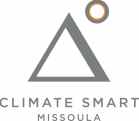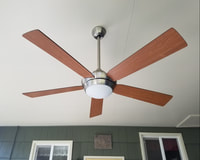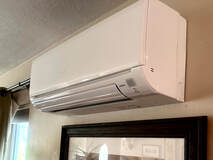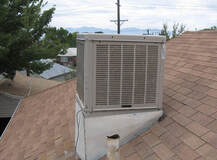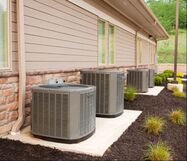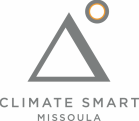Over the long run, we need to plan and build a future better suited for heat, with cool places to go, abundant shade, comfortable homes, and lots and lots of water.
What can you do? Keep your home, neighborhoods & businesses cool.
|
Here we have cool tips for how to regulate indoor temperatures (see our shade page for a wider lens on both indoor & outdoor cooling).
We've put together a comparison of:
Do you have favorite ideas of things that work (or don't)? Please share here! |
Fans, Heat Pumps, Swamp Coolers, and Air Conditioners
fans
Pros
|
|
evaporative coolers (aka swamp coolers)
Evaporative coolers use water to cool the air in your home. They work well in Missoula's dry summers and can add moisture to the air to increase comfort.
Smaller models can be portable or window-installed. Roof-mounted swamp coolers are also available to cool entire homes.
If you're a DIY person, you can even learn how to make your own swamp cooler for cheap on this cool YouTube video!
Smaller models can be portable or window-installed. Roof-mounted swamp coolers are also available to cool entire homes.
If you're a DIY person, you can even learn how to make your own swamp cooler for cheap on this cool YouTube video!
Pros
|
|
air conditioners
Air conditioners have the greatest cooling capacity of any cooling appliance. They use chemical refrigerants and can be set to a specific temperature. To save money and use them most efficiently, use A/C in conjunction with these Energy Smart tips, and run A/C only when necessary.
Pros |
Cons |
Tips for Best Use |
|
|
|
Heat pumps (aka mini splits)
Pros
|
Cons
|
Tips for Best Use
|
Shopping for a cooling device?
Here are some things to consider.
Here are some things to consider.
cost
Remember to consider not only the up-front cost of purchasing a cooling appliance, but also the costs of installation (if any) as well as the longer term costs of operating it. Fans are the cheapest option. The cost of purchasing a heat pump* (also known as a mini split), swamp cooler or air conditioner varies widely based on the type and the size of the space they can cool, but air conditioners are much more expensive to operate. Heat pumps can both heat and cool very efficiently - they'll likely give you the most cooling-bang for your buck!
*For more info on heat pump heating and cooling, visit our Electrify Missoula webpage.
*For more info on heat pump heating and cooling, visit our Electrify Missoula webpage.
cooling capacity
Air conditioners, including air source heat pumps, have the greatest ability to significantly cool a room or home. They offer more precise temperature control than swamp coolers or fans.
installation
Will you choose a portable appliance, or one that requires installation?
effects on humidity
Swamp coolers add moisture to the air, while air conditioners and heat pumps dry out the air. Fans have no effect on humidity.
maintenance
Swamp coolers require regular upkeep, air-conditioning units and heat pumps require yearly maintenance, and fans require almost no maintenance.
energy use
Fans use the least energy, followed by heat pumps, then swamp coolers. Air conditioners use the most energy and also emit CO2 directly from the chemical cooling process used.
choose the energy star
Created by the U.S. Department of Energy, this certification can be found on cooling appliances that operate more efficiently and use less energy.
personal needs
Most people can tolerate moderate levels of heat in their homes. However, some people - including senior citizens, very young children, pregnant women, and those with certain pre-existing health conditions - are at greater risk of heat-related illness.
complementary cooling
Different cooling appliances can be used together to increase effectiveness and save energy. For example, using fans helps reduce the amount of air conditioning needed. Using Shade and being Energy Smart can also reduce how often you need to use cooling appliances.
